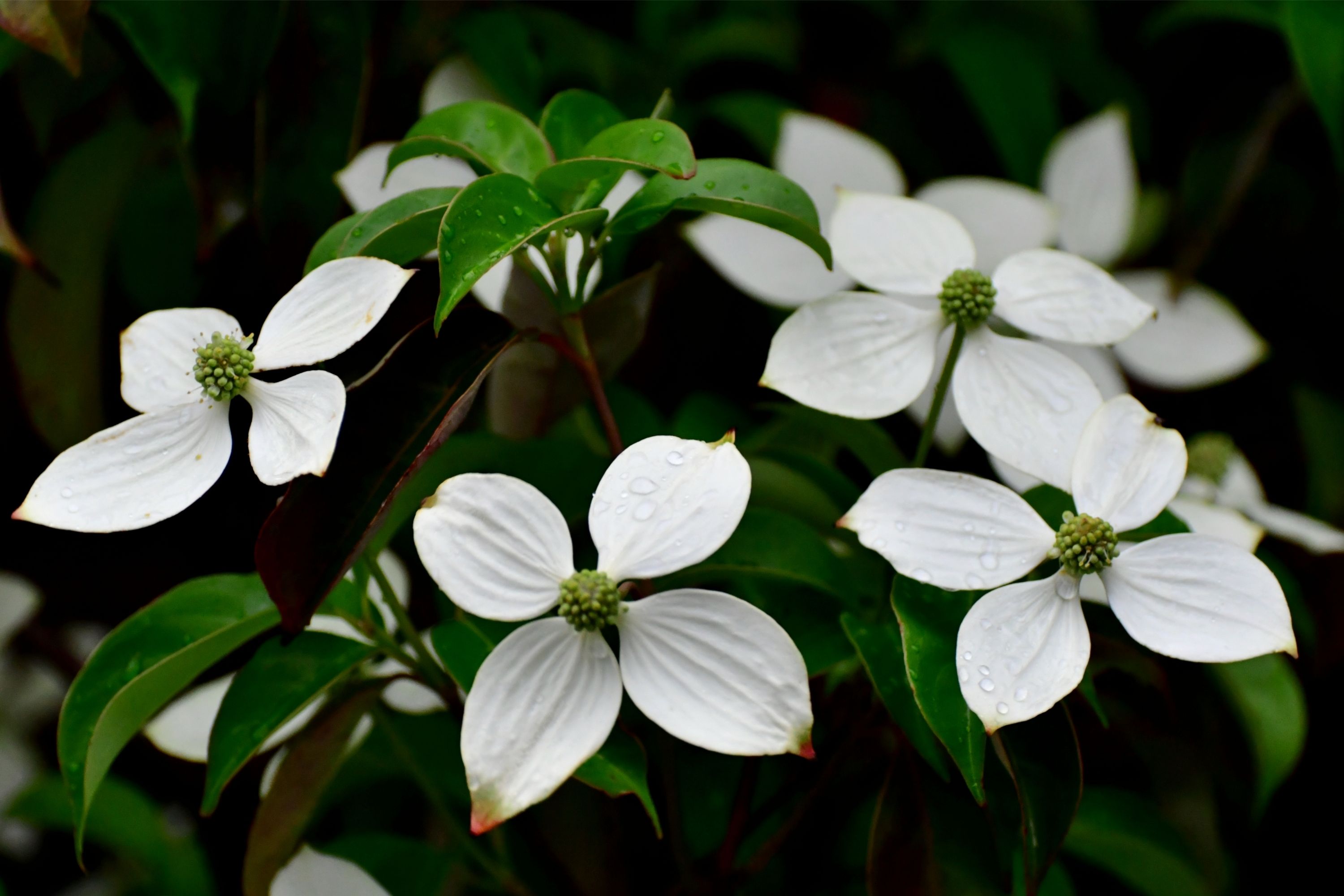Japanese dogwood
(Cornus kousa)

Description
Cornus kousa, commonly known as the Kousa dogwood or Japanese dogwood, is a species of flowering tree in the dogwood family, Cornaceae. Native to Japan, Korea, and China, this small to medium-sized deciduous tree has gained popularity in North America as an ornamental plant due to its striking flowers, attractive bark, and edible fruit. In this article, we'll delve into the details of Cornus kousa, from its physical characteristics to its cultivation and uses. Taxonomy and Nomenclature Cornus kousa was first described by the German botanist Philipp Franz von Siebold and his Dutch colleague, Franz von Siebold, in 1838. The species name "kousa" comes from the Japanese word for the plant, "kousa no ki." Cornus kousa is also commonly known as the Chinese dogwood, Korean dogwood, and strawberry tree, although the latter name is also used for the related species, Cornus capitata. Physical Description Cornus kousa typically grows to a height of 8 to 12 meters (26 to 39 feet) and spreads out to a similar width. The tree has a pyramidal shape when young, but as it ages, it develops a more rounded, spreading canopy. The bark of the tree is brownish-gray and exfoliates in small flakes, revealing a smooth, tan inner bark. The leaves are simple, oval-shaped, and pointed at the tip, with a dark green color on top and a lighter green underneath. In the fall, the leaves turn shades of orange, red, and purple. The most notable feature of Cornus kousa is its flowers. The tree blooms in late spring to early summer, producing small, yellowish-green flowers surrounded by four large, white or pink bracts that resemble petals. The bracts often persist after the flowers have fallen, giving the appearance of a second flush of blooms. The flowers are followed by a small, round, reddish-pink fruit that resembles a strawberry and is edible, although it has a mealy texture and bland taste. Cultivation Cornus kousa is a hardy tree that is relatively easy to grow and care for. It prefers moist, well-drained soil and partial shade to full sun. The tree is adaptable to a range of soil types, including clay, loam, and sand, and can tolerate acidic to slightly alkaline soil. It is also tolerant of drought once established, but may require supplemental watering during periods of extended dryness. The tree can be propagated by seed or by cuttings, although seed-grown plants may take several years to reach maturity. Cuttings taken in the summer or fall can be rooted in a sandy soil mixture and grown under high humidity until they develop roots. Once established, Cornus kousa requires minimal pruning, although dead or damaged wood should be removed in the late winter or early spring. Uses Cornus kousa is primarily grown as an ornamental tree, prized for its showy flowers, attractive bark, and fall foliage color. It is often planted as a specimen tree or in small groups in gardens, parks, and along streets. The fruit is also occasionally used in jams and jellies, although it is not commonly consumed due to its gritty texture. In addition to its ornamental value, Cornus kousa has some medicinal properties. The bark of the tree has been used in traditional Chinese medicine to treat fever, pain, and inflammation, and recent studies have shown that it has antioxidant and anti-inflammatory effects. The fruit of the tree is also a good source of vitamin C and other antioxidants.
Taxonomic tree:







